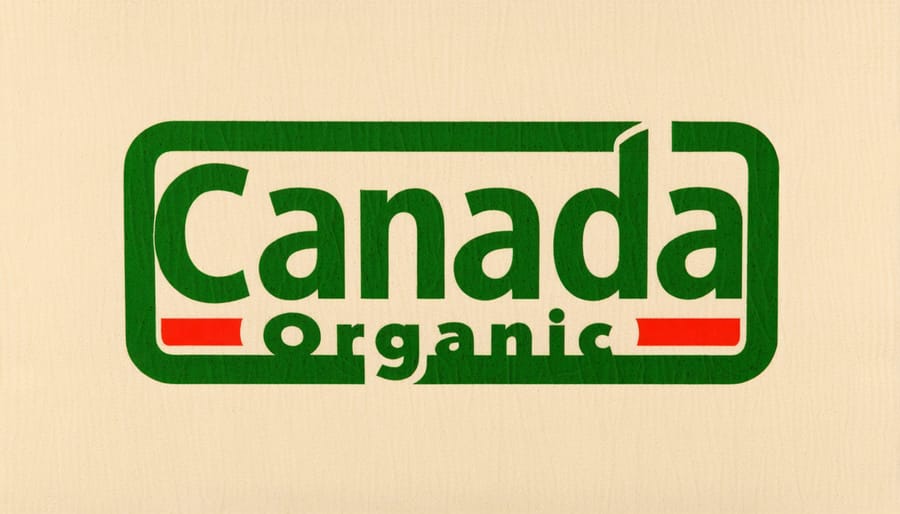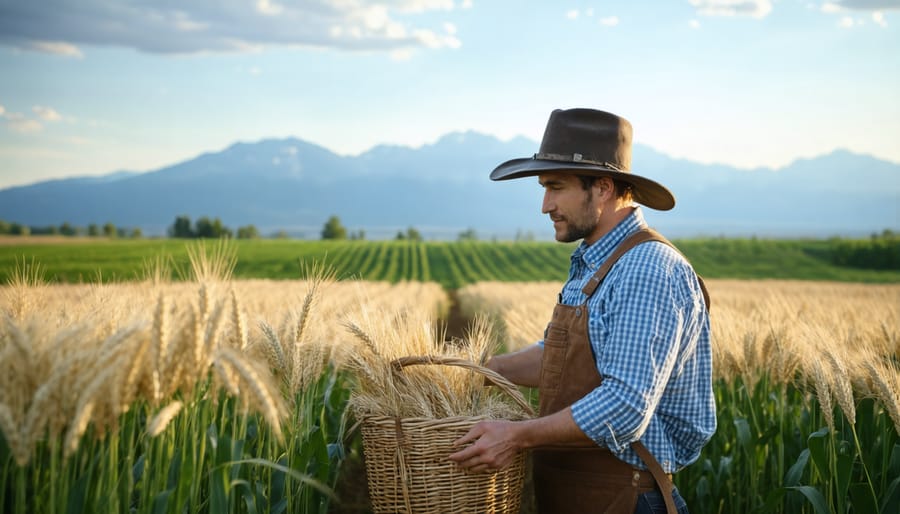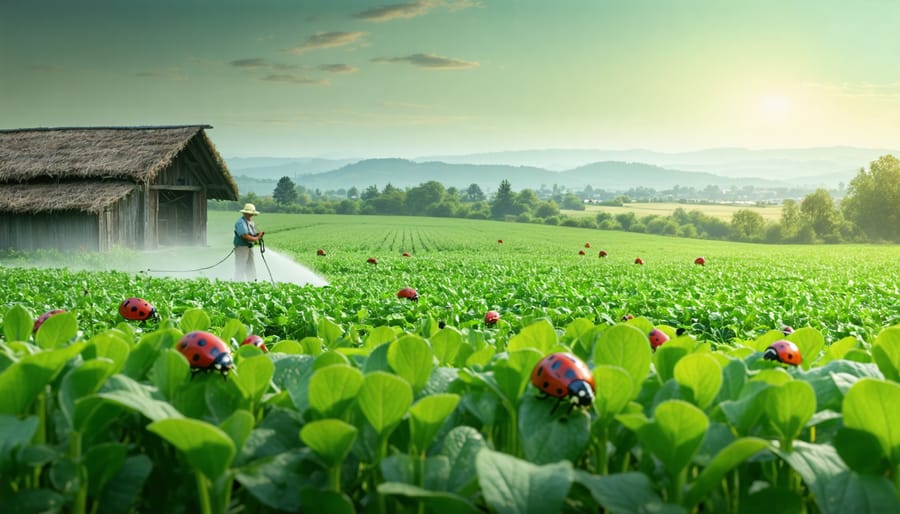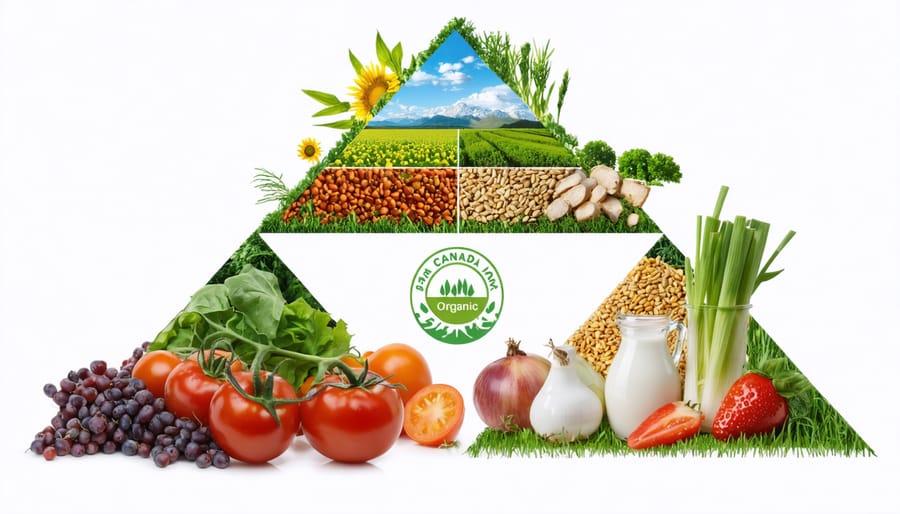Organic certification in Canada demands rigorous compliance with the Canadian Organic Standards, transforming how we grow, process, and verify our food. From Prairie wheat fields to British Columbia orchards, certified organic producers follow strict protocols that prohibit synthetic pesticides, GMOs, and artificial growth hormones. Understanding organic certification empowers farmers and consumers to make informed decisions about food quality, environmental stewardship, and agricultural sustainability.
The growing demand for organic products in Alberta – reaching $531 million in 2021 – highlights the critical need for reliable organic verification methods. Whether you’re a producer considering certification or a consumer seeking authentic organic products, recognizing official organic labels and understanding the certification process ensures authenticity in our food system. Modern organic agriculture combines traditional farming wisdom with innovative sustainable practices, creating resilient food systems that support both environmental health and rural communities across Canada.
Official Canadian Organic Certification Labels
The Canada Organic Logo
The Canada Organic logo, featuring a maple leaf and the bilingual text “CANADA ORGANIC • BIOLOGIQUE,” serves as the nation’s official mark of trust for certified organic products. To display this symbol, producers must meet strict organic certification requirements established by the Canadian Food Inspection Agency (CFIA).
Products bearing this logo must contain at least 95% organic content and comply with the Canadian Organic Standards. These standards ensure sustainable farming practices, prohibit the use of synthetic pesticides and GMOs, and maintain strict documentation of production methods. The certification process involves regular inspections, soil testing, and comprehensive record-keeping.
For Alberta farmers, obtaining permission to use the logo requires certification through CFIA-accredited bodies like Pro-Cert Organic or Ecocert Canada. The logo can only appear on products that have been verified through the complete certification process, providing consumers with confidence in their organic purchases while offering producers a recognized symbol of their commitment to organic agriculture.
Remember that imported products must meet equivalent organic standards to display the Canadian logo, ensuring consistency across all organic products in our market.

Provincial Certification Bodies
In Alberta, organic certification is overseen by several recognized bodies that work within the Canada Organic Regime framework. The Alberta Organic Producers Association (AOPA) stands as a prominent provincial certifier, offering certification services specifically tailored to local farming conditions and requirements.
Other significant provincial certification bodies operating in Canada include Pro-Cert Organic Systems, which serves multiple provinces including Alberta, Saskatchewan, and Manitoba. The Pacific Agricultural Certification Society (PACS) primarily serves British Columbia but also certifies operations across Western Canada.
Each provincial certifier maintains strict compliance with the Canadian Organic Standards while understanding regional agricultural practices and challenges. Quebec’s certification system, managed by the Quebec Accreditation Board (CARTV), operates under additional provincial regulations, making it unique among Canadian jurisdictions.
These provincial bodies conduct annual inspections, maintain detailed documentation, and work closely with farmers to ensure organic integrity. They also provide valuable resources and support for producers transitioning to organic practices, helping strengthen Canada’s organic sector at the regional level.
Reading Organic Product Labels
Mandatory Label Elements
When it comes to understanding organic food labels, certain elements must appear on all certified organic products in Canada. The Canada Organic logo, accompanied by the certification body’s name, is mandatory for products containing 95% or more organic ingredients. This distinctive black and green maple leaf symbol ensures consumers can easily identify certified organic products.
Products must clearly display their organic ingredients in the ingredient list, typically marked with the word “organic” before each organic component. The certifying body’s name and contact information must be visible on the package, allowing for transparency and traceability.
For multi-ingredient products, the percentage of organic content must be indicated when the organic claim appears on the principal display panel. This information helps consumers make informed decisions about their purchases.
Alberta farmers should note that products intended for export may require additional labelling elements to meet international standards. The label must also include the statement “Certified organic by” followed by the name of the certification body, typically placed on the information panel.
All text must be clearly legible and in both English and French, following Canadian bilingual labelling requirements. These standardized elements ensure consistency across the organic marketplace and help maintain consumer confidence in organic certification.
Common Label Misleading Terms
When shopping for organic products, you’ll encounter various terms that might appear similar to “organic” but carry different meanings. Terms like “natural,” “free-range,” and “hormone-free” are not equivalent to organic certification and don’t follow the same rigorous standards.
In Alberta’s markets, “farm-fresh” and “locally grown” are common terms that, while positive attributes, don’t indicate organic production methods. Products labeled as “chemical-free” or “pesticide-free” may sound similar to organic but lack the comprehensive certification process that organic products undergo.
“All-natural” is particularly misleading as it has no regulated definition in Canada. While natural products may be minimally processed, they don’t necessarily meet organic standards for soil management, animal welfare, or prohibited substances.
Remember that genuine organic products will display the Canada Organic logo or other recognized certification symbols. Products labeled “made with organic ingredients” must contain at least 70% organic content, but this isn’t the same as being fully organic.
At farmers’ markets, vendors might use terms like “sustainably grown” or “eco-friendly.” While these practices may align with environmental stewardship, they don’t guarantee compliance with organic standards. Always ask questions about growing methods and certification status when purchasing directly from producers.

Verification Tools and Resources
Online Verification Databases
Verifying organic certification in Canada has become increasingly accessible through several online databases. The Canadian Food Inspection Agency (CFIA) maintains a comprehensive organic regime database where you can search for certified operations across the country. To use this tool, simply enter the farm or producer name, and the system will display their current certification status and history.
For Alberta farmers and consumers, the Certified Organic Associations of British Columbia (COABC) database offers an additional verification resource that covers Western Canadian operations. This user-friendly platform allows you to search by producer name, certification body, or product type.
The Organic Council of Ontario’s verification portal provides cross-reference capabilities for products and producers nationwide. When using these databases, ensure you have the correct spelling of the operation name or certification number from the product label.
Pro tip from local organic farmer Sarah Thompson of Peace Country Organics: “I recommend checking multiple databases and verifying the certification expiry dates, as they’re updated regularly. It’s also worth bookmarking these tools on your phone for quick reference while shopping or meeting potential suppliers.”
Remember that certification status can change, so it’s good practice to verify information quarterly if you’re maintaining ongoing relationships with organic suppliers.
Local Support Networks
Alberta offers a robust network of organizations supporting organic agriculture and food production. The province’s organic community is strengthened by several key organic certification bodies in Canada that provide local assistance and guidance.
Organic Alberta, headquartered in Edmonton, serves as a central hub for organic producers, offering mentorship programs, educational workshops, and networking opportunities. Their farm-to-farm mentorship program has successfully helped over 200 conventional farmers transition to organic practices in the past decade.
The Prairie Organic Development Fund provides financial support and resources for organic research initiatives, while the Organic Food Council of Alberta connects consumers with local organic producers through their directory and seasonal farmers’ markets.
Regional agricultural societies throughout the province offer specialized organic farming workshops and field days, providing hands-on learning experiences. The Alberta Farm Fresh Producers Association maintains an extensive database of organic producers and helps facilitate direct marketing opportunities.
For technical support, producers can access services through organic specialists at Alberta Agriculture and Forestry, who provide soil testing, crop planning assistance, and pest management strategies tailored to organic production methods.

Case Study: Alberta Organic Success Story
Meet Sarah and Tom Henderson, third-generation farmers from Lacombe County who successfully transformed their conventional 400-hectare farm into a thriving organic operation over five years. Their journey began in 2015 when market research showed growing demand for organic grains in central Alberta.
The Hendersons worked closely with Pro-Cert Organic Systems, investing time in understanding certification requirements and developing a comprehensive transition plan. They started with a 40-hectare test plot, gradually expanding as they gained confidence in organic practices.
Key to their success was meticulous record-keeping and building relationships with experienced organic farmers in the region. They participated in the Alberta Organic Producers Association mentorship program, which provided invaluable guidance during challenging periods.
By 2020, their entire farm achieved organic certification, producing wheat, oats, and yellow peas. The Hendersons report a 30% increase in profit margins compared to conventional farming, despite initial transition costs. They’ve also noticed improved soil health and increased biodiversity on their land.
“The certification process seemed daunting at first,” Sarah explains, “but breaking it down into manageable steps and having support from the organic farming community made it achievable. The key is patience and planning.”
Their story has inspired five neighboring farms to begin their organic transition, creating a growing hub of organic agriculture in central Alberta.
Ensuring the authenticity of organic products is essential for maintaining trust in our agricultural community and supporting sustainable farming practices across Alberta and Canada. By familiarizing yourself with official certification marks, understanding product labels, and implementing verification methods, you’re taking crucial steps toward protecting the integrity of organic agriculture. Remember that verification isn’t just about following rules—it’s about fostering transparency and building lasting relationships between farmers, processors, and consumers. Take advantage of local resources, connect with certification bodies, and don’t hesitate to ask questions when uncertain. Together, we can maintain the high standards that make Canadian organic products respected worldwide while supporting our local agricultural economy. Start implementing these verification practices today to strengthen your role in our organic farming community.








